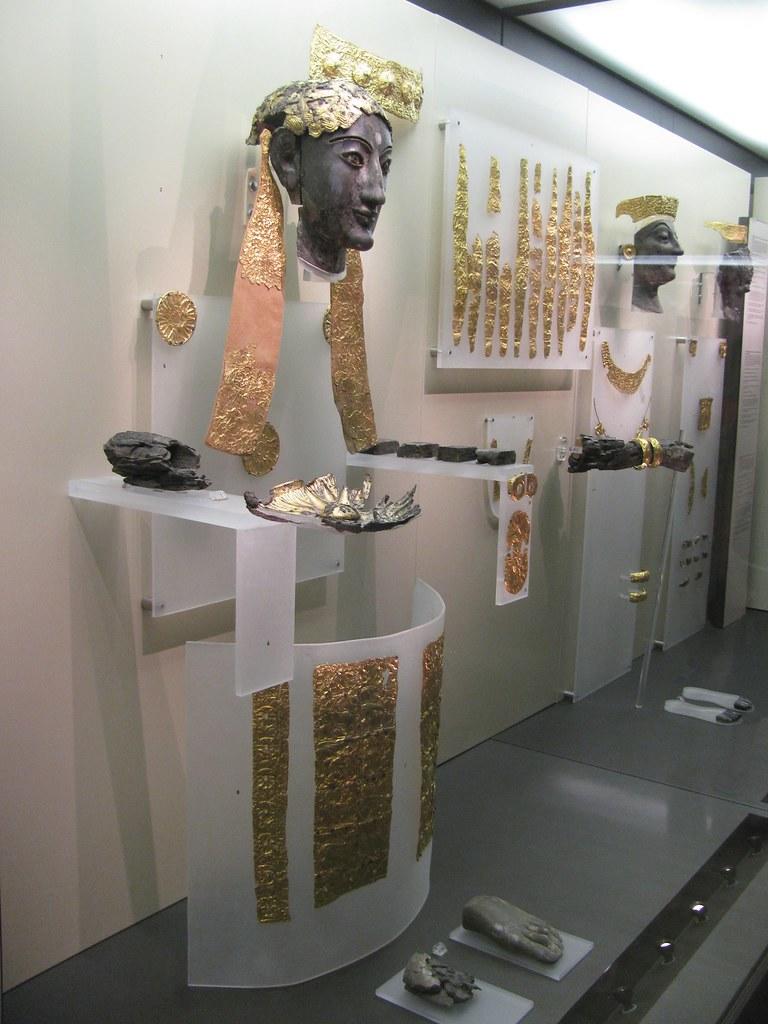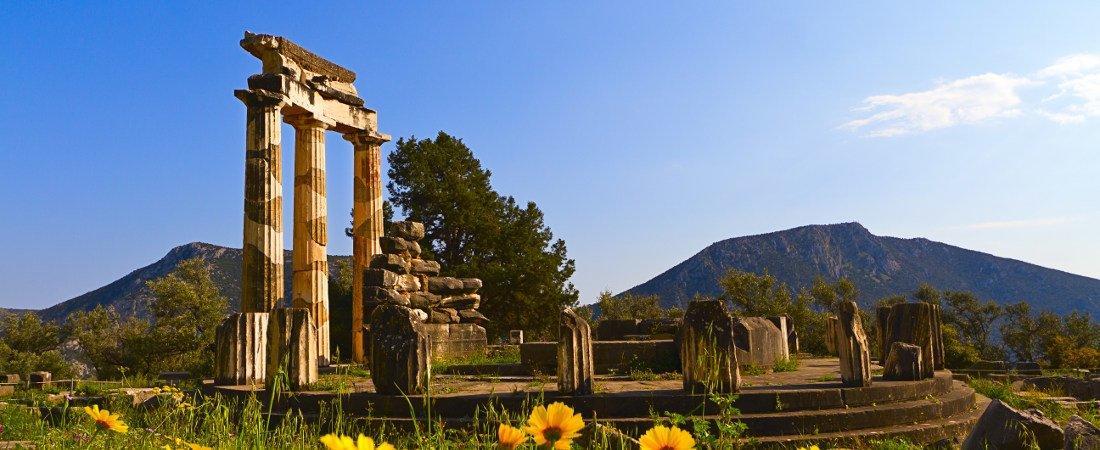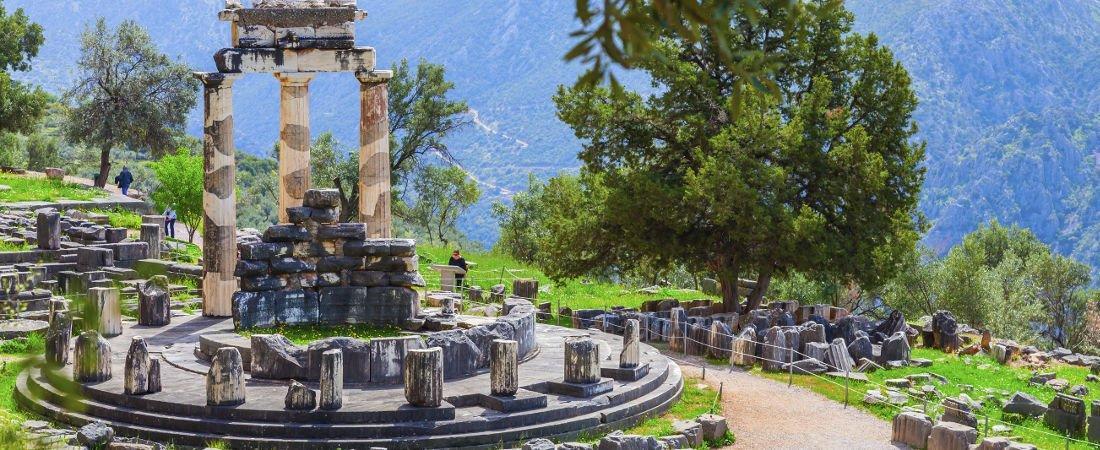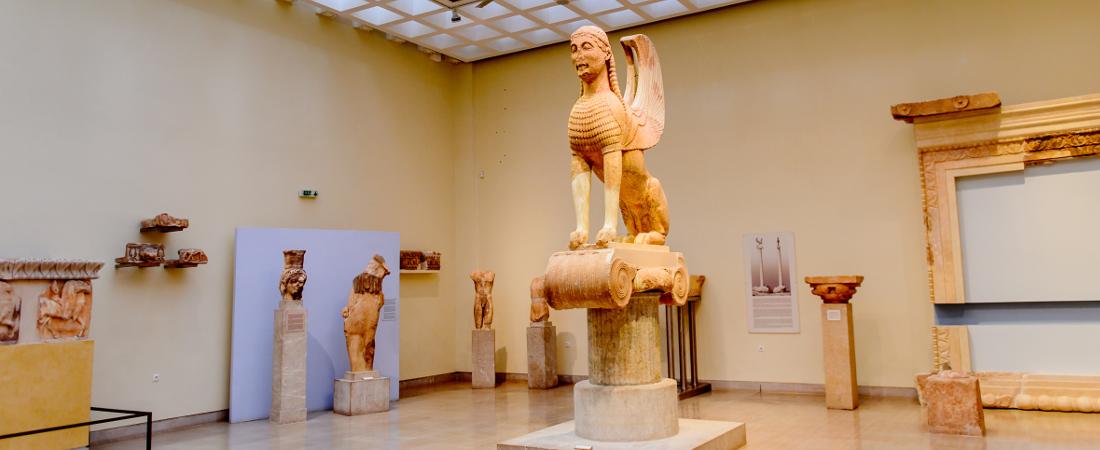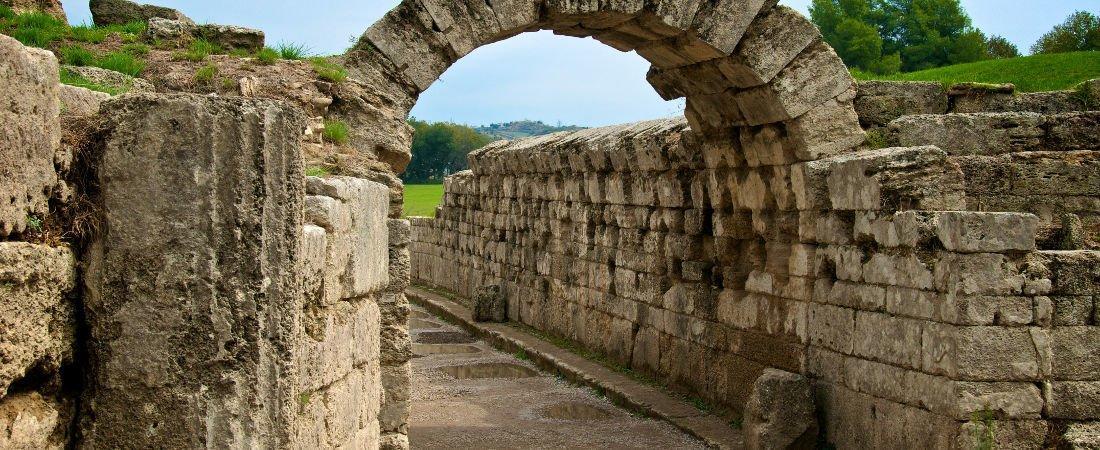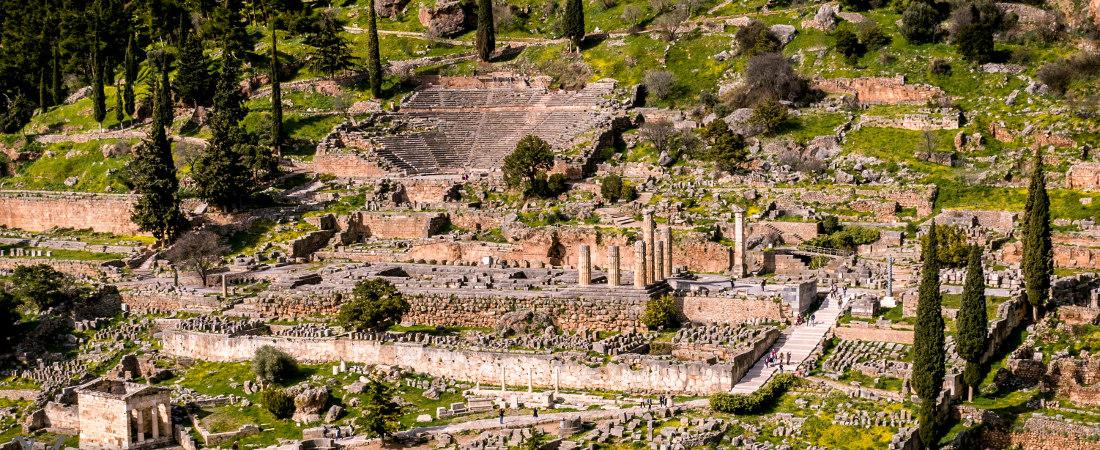The Museum in Delphi Archaeological Site
The Museum of Delphi Archaeological Site is one of the most important museums of Greece and one of the most visited. It was founded in 1903 and has been rearranged several times. It houses discoveries made at the panhellenic sanctuary of Delphi Archaeological Site, which dates from the Late Helladic period to the early Byzantine era.
The collections are arranged chronologically in fourteen rooms on two levels. In general, the museum mainly displays statues, including the famous Charioteer of Delphi, Architectural Elements, like the Frieze of the Siphnian Treasury, and ex-votos dedicated to the sanctuary of Pythian Apollo, like the Sphinx of Naxos.
Main exhibits
To begin with, the first two rooms are devoted to the most ancient objects. Starting with Mycenaean finds, particularly, clay figurines. Among these is a significant female figure seated on a three-legged chair, which has been viewed as a precursor of the later tripods. However, the majority of the exhibits are bronze votive offerings, dating to the 8th and 7th centuries BC. They include bronze tripods and cauldrons with decorative elements inspired by mythical creatures, such as griffins, as well as bronze figurines of warriors. Notably, the items displayed date to the late Geometric and early Archaic periods.
Room 3
Room 3 is dominated by The Kouroi of Delphi, archaic male statues known also as Cleobis and Biton. They were produced at Argos between 610 and 580 BC. It also contains The Metopes of the Treasury of the Sicyonians. The latter includes four metopes made of yellowish poros stone from Sicyon, coming from the so-called “monopteros”.
Room 4
Room 4 is dedicated to the very precious offerings found in a pit on The Sacred Way. The silver Statue of a Bull and the Chryselephantine statues. These statues represent the Apollonian triad, namely God Apollo, Goddess Artemis, and their mother, Leto. Notably, the room reminds us of a safe where visitors are let in and admire the precious objects.
Room 5
Room 5 displays The Sphinx of Naxos and The Friezes of the Siphnian Treasury. The parts of the treasury displayed include one of the two Korae. Korae are the elegant female figures supporting the vestibule of the treasury, one of the capitals, and parts of the frieze.
Moreover, the most impressive exhibit, however, is the Sphinx. It is an enormous statue crowned with an ionic column and capital. In fact, the column, 12 meters in height, stood close to the Halos. The City of Naxos dedicated The Sphinx. Naxos was a wealthy island of the Aegean in its prime time, i.e. between 575 and 560 BC. An inscription at the base of the column renews the right of “promanteia” for Naxos in the 4th century BC.
Room 6
Room 6 contains the archaic and classical facades of the Temple of Apollo in Delphi Archaeological Site. The archaic sculptures, made of Parian marble, include a carriage with four horses, carrying God Apollo. To the left of the carriage stood three female figures. Possibly the daughters of Kekrops, King of Athens. To the right are three male figures. The scene is identified as the advent of God Apollo to Delphi. Important to realize is that the sculptures of the pediments of the 4th-century temple were made of Pentelic marble.
Rooms 7 & 8
Rooms 7 & 8 contain objects from the Treasury of the Athenians. The first room contains the metopes, the second contains acroteria, pedimental sculpture, and inscriptions. The two pediments of the Treasury of the Athenians are fragmentary. Furthermore, they depict, apparently, the meeting of Theseus, Peirithus, and Hercules in a battle scene. Twenty-seven out of the thirty metopes of the treasury are also preserved. They bear representations in deep relief. Also, the east side metopes depict an Amazonomachy.
Visit Delphi and enjoy its Marvelous sites with our 1 Day Tour To Delphi and Visit of Arachova Village
See the Delphi Archaeological Site with one of our tours:
- 1 Day Tour To Delphi and Visit of Arachova Village
-
2 Day Tour to Delphi Archaeological site and visit of Meteora Monasteries
-
3 Day Tour To Epidaurus, Mycenae, Nauplio, Olympia and Delphi Archaeological Sites
-
2 Day Tour to Delphi Archaeological site and Visit of Arachova
-
3 Day Tour to Archaeological Site and Museum of Delphi and Meteora Monasteries
-
5 Day Tour To Epidaurus, Nauplion, Mycenae, Olympia, Delphi and Meteora Monasteries
-
8 Day Combined Tour Package to the Islands and Historical Sites of Greece
-
4 Day Tour To Epidaurus, Mycenae, Nauplion, Olympia, Delphi and Meteora Monasteries


